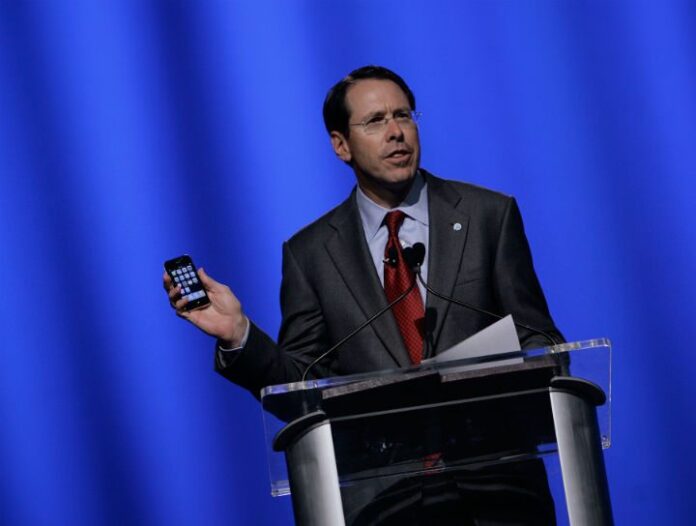AT&T’s mobile business showed overall growth on the back of prepaid and connected devices, but lost ground to T-Mobile in higher-valued phone market
Prepaid and connected devices continue to power AT&T Mobility growth as the carrier posted strong year-over-year increases in those segments offsetting a dip in direct postpaid net additions.
The carrier reported nearly 1.8 million total net connection additions during the first quarter, which was a sizable increase compared with the 1.2 million net connection additions posted last year. The latest growth was on the back of nearly 1.6 million net connected device additions and 500,000 direct prepaid net additions.
Those segments made up for a dip in direct postpaid growth, which dropped from 441,000 net additions last year to just 129,000 net additions this year; and growing defections in its reseller business, which witnessed net losses increase from 266,000 net losses last year to 400,000 net losses this year. The drop in postpaid net additions was somewhat boosted by 344,000 tablet and computing device net additions, though also highlighted the carrier lost postpaid “phone” connections during the quarter.
AT&T’s recently acquired and consolidated operations in Mexico posted 566,000 branded net additions for the quarter, while its reseller operations lost 37,000 connections. Overall, AT&T claimed its North American operations managed more than 2.3 million net connection additions for the quarter.
AT&T Mobility’s overall growth did managed to outpace those of rivals Verizon Wireless and T-Mobile US, though digging deeper showed a greater reliance on new markets and segments.
T-Mobile US posted a robust 2.2 million net connection additions for Q1, which included more than 1 million postpaid net connections that included 877,000 new “phone” customers. T-Mobile US’ prepaid services, which are dominated by its MetroPCS brand, also handily outpaced AT&T Mobility’s prepaid business with 807,000 net connection additions in Q1.
In terms of a comparison to Verizon Wireless, AT&T Mobility came up short of the 640,000 direct postpaid net additions reported by its rival, and also looks to have lost more than 8,000 “phone” defections posted by Verizon Wireless.
AT&T Mobility did note it ended the quarter with more than 130 million total connections on its wireless network, which with Verizon Wireless failing to provide a full accounting of the total connections on its network places AT&T Mobility as the domestic markets largest carrier, and nearly double the size of No. 3 carrier T-Mobile US.
The drop in postpaid growth was also apparent in the year-over-year increase in customer churn, which grew from 1.02% last year to 1.1% this year, while total churn ticked up slightly from 1.4% last year to 1.42% this year.
The change in customer mix also negated an increase in traditional segment spending, as total wireless revenues dropped slightly year-over-year to just under $18 billion, despite average revenue per user from postpaid customers including monthly phone payments increasing 5.1% to $69.54.
AT&T did note it managed to trim wireless segment operating expense, which boosted segment earnings before interest, taxes, depreciation and amortization from $6.7 billion last year to $7.3 billion this year, and EBITDA margins from 36.9% to 40.8% over the same time period. AT&T said it spent $4.5 billion on capital expenditures during the first quarter, which was a nearly 16% increase over last year, and that it ended Q1 with 12% more employees at nearly 281,000 in total head count.
Of course, AT&T’s operations over the past year have been greatly diversified with the closing of its $48.5 billion acquisition of DirecTV and its previously mentioned expansion into Mexico. The telecom giant reported a 24.4% overall increase in total revenues to $40.5 billion, which it attributed mostly to the DirecTV deal, while total expenses were up a slightly more modest 23.6% resulting in a 16.5% increase in total net income to $3.8 billion for the quarter. Shareholders were not as lucky as diluted earnings per share dipped 2 cents to 61 cents for the quarter.
AT&T management seemed to acknowledge the modest quarterly results, using subdued terms in describing performance.
“It was a good start to the year,” said AT&T Chairman and CEO Randall Stephenson. “We had solid financial results and executed well on our strategy to be the premier integrated communications provider for businesses and consumers. We’re seeing good momentum with our initial integrated wireless, video and broadband offers. And we’ll expand the integrated choices for customers in the fourth quarter when we launch our new video streaming services.”
Bored? Why not follow me on Twitter

